Abstract
Exposure of hamster tracheal organ cultures to virulent Mycoplasma pneumoniae leads to alterations in ribonucleic acid (RNA) and protein biosynthesis and metabolism of the respiratory epithelium. An examination of the turnover rates of RNA and protein in infected tracheal organ cultures indicates that the rates of degradation of both prelabeled host cell RNA and protein are similar to those of uninfected controls. Infected tracheal organ cultures shifted to a nonpermissive medium within 24 h after infection and further incubated in the nonpermissive medium for 72 or 96 h behaved as normal uninfected cultures in terms of metabolic precursor uptake. Under these conditions, mycoplasmas remained attached to the respiratory epithelium. Cell membranes prepared from virulent mycoplasmas by several procedures neither attached to nor altered the metabolic activity of tracheal cultures. These data indicate that the intimate contact between virulent mycoplasmas and the respiratory epithelium does not alone account for the subsequent interruption of host cell metabolism but must be accompanied by continued multiplication and biochemical function of attached mycoplasmas.
Full text
PDF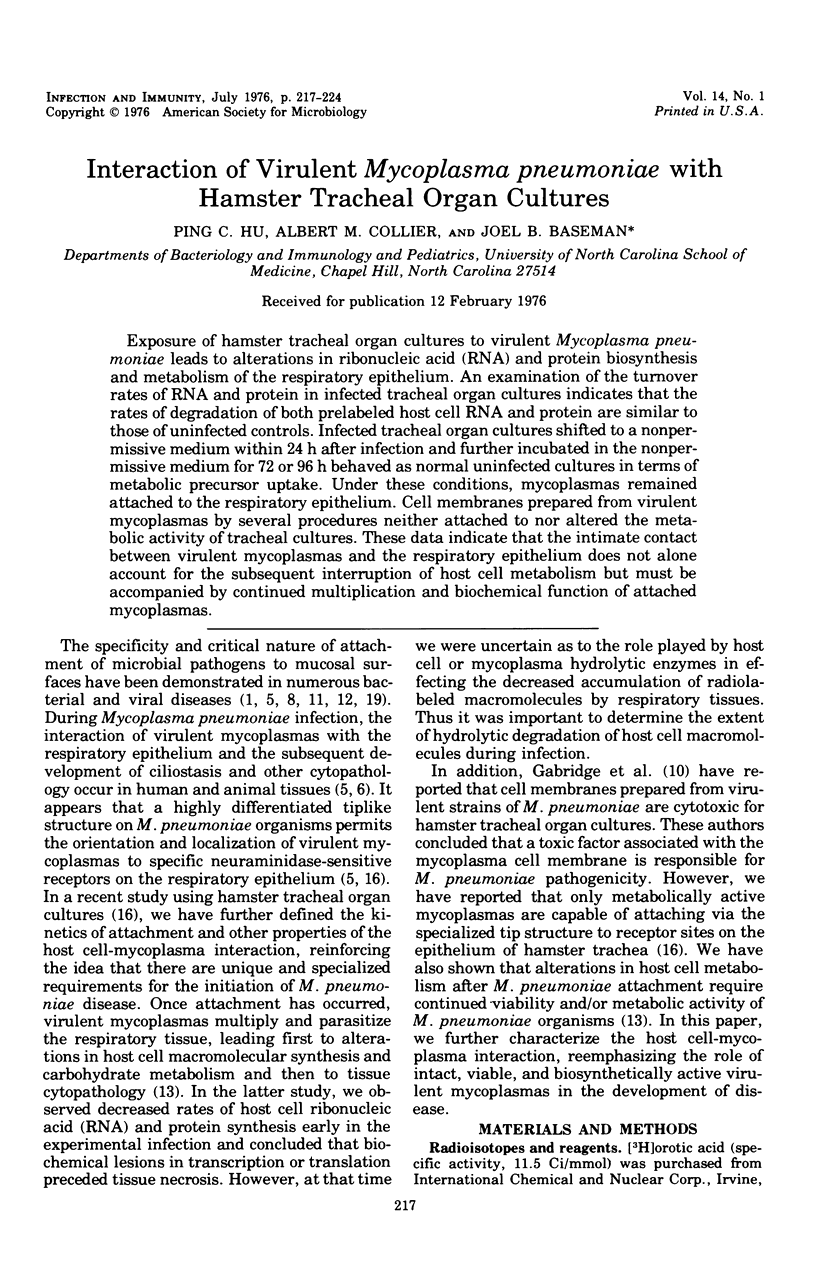
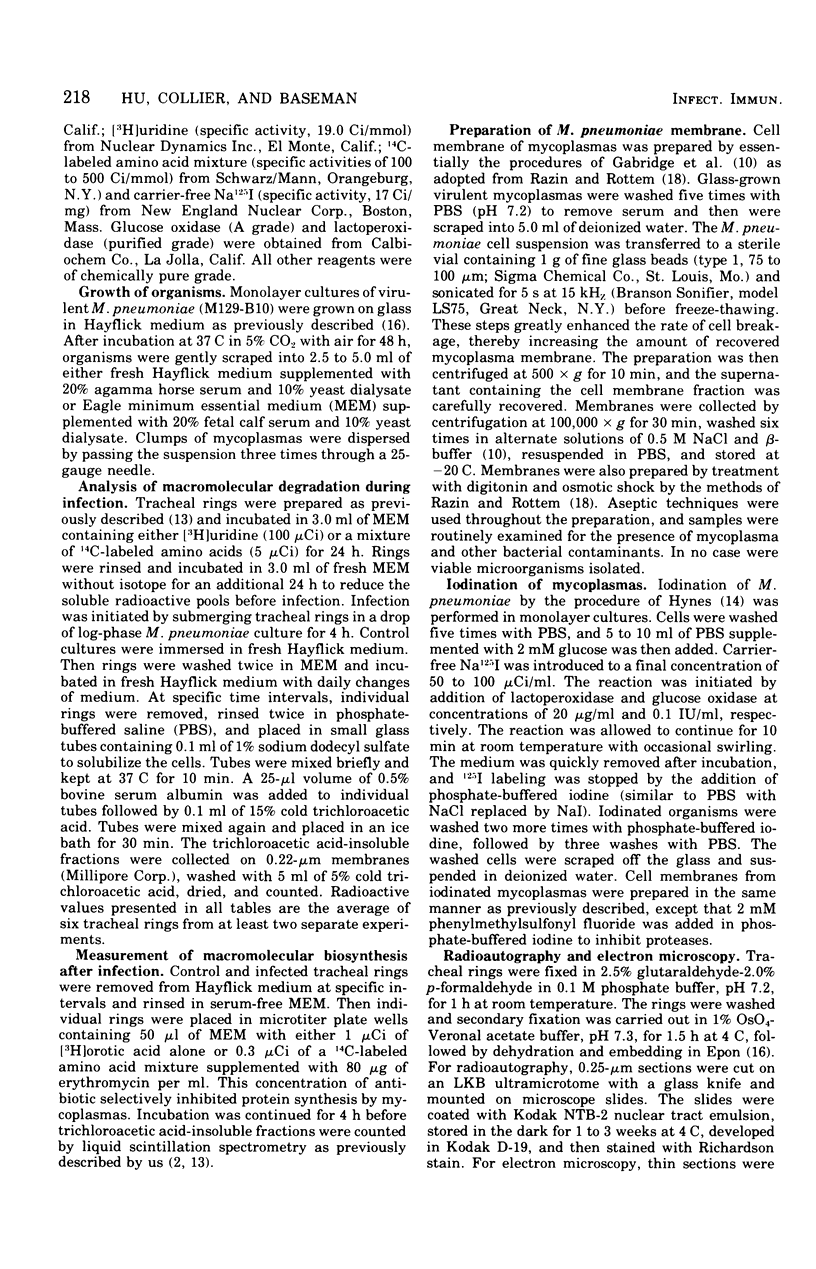
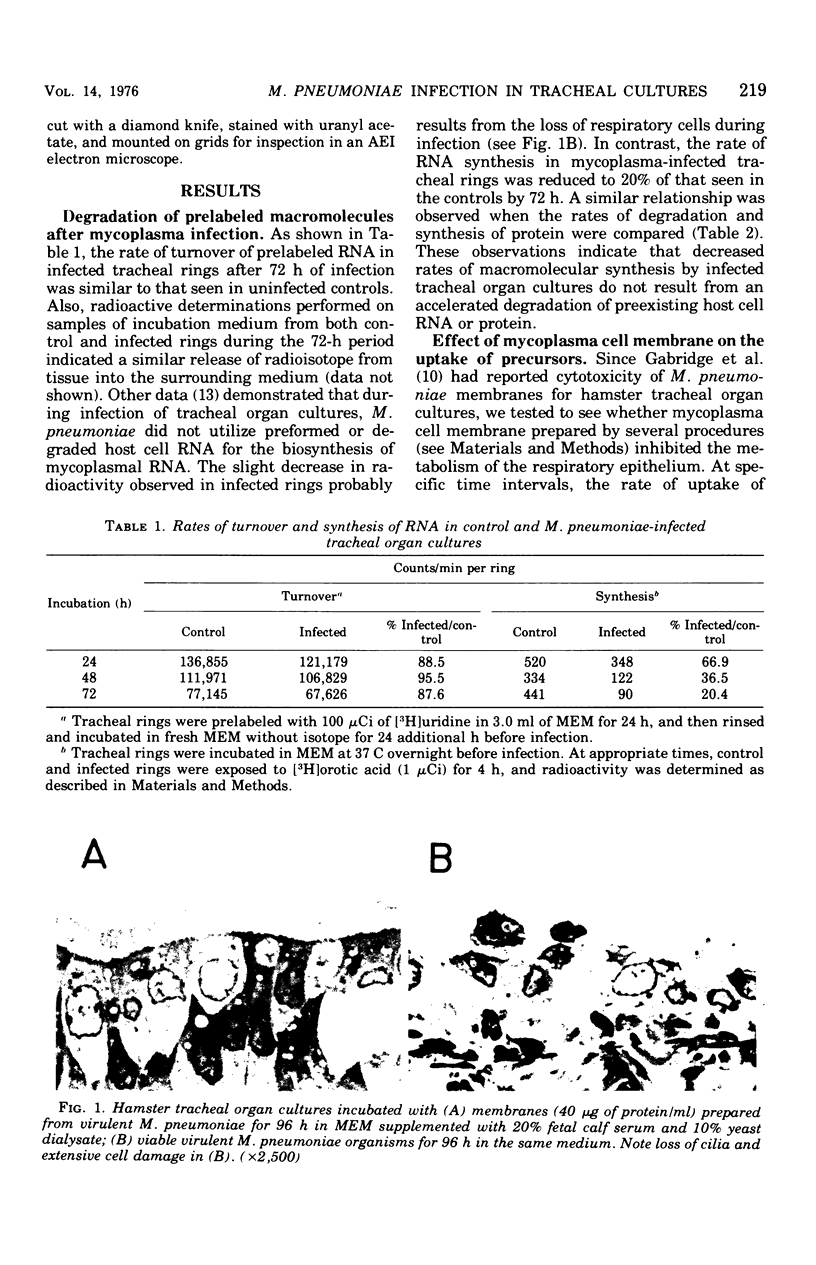
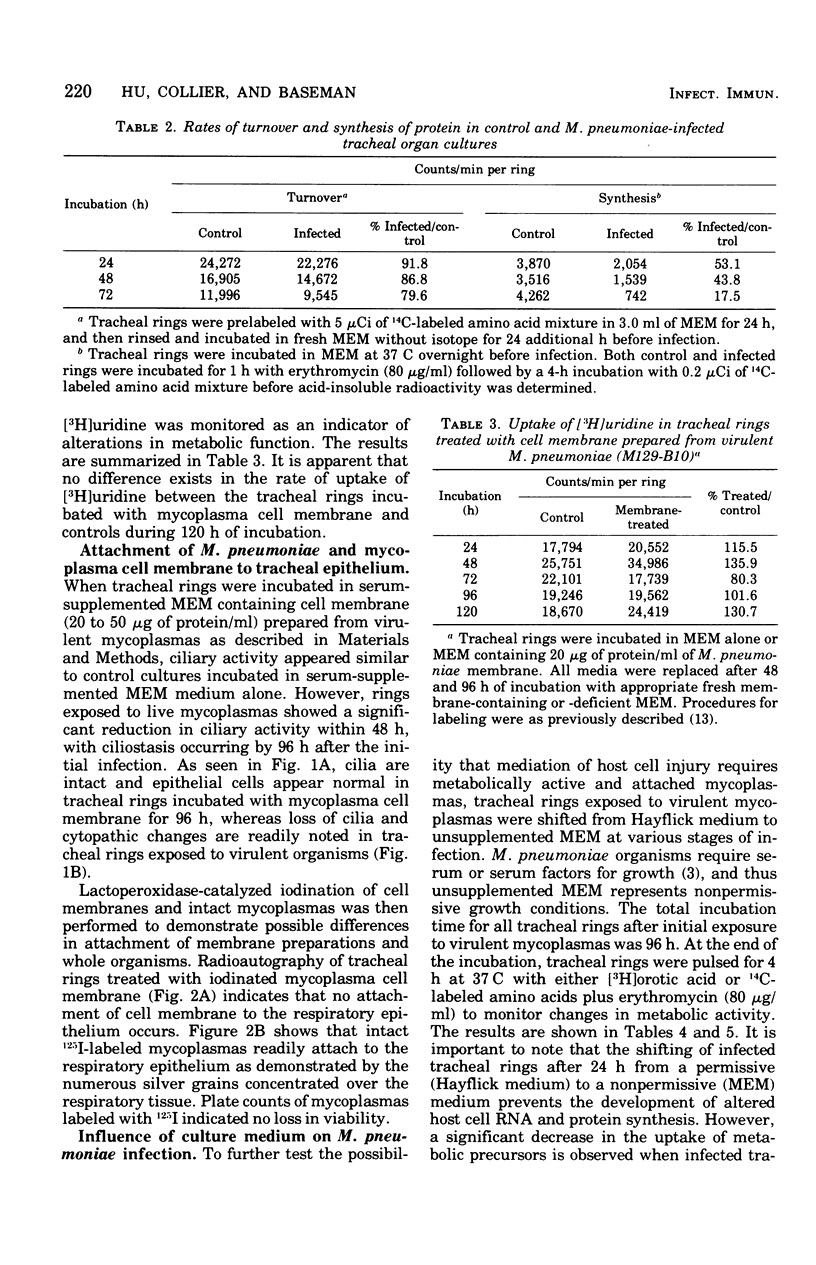
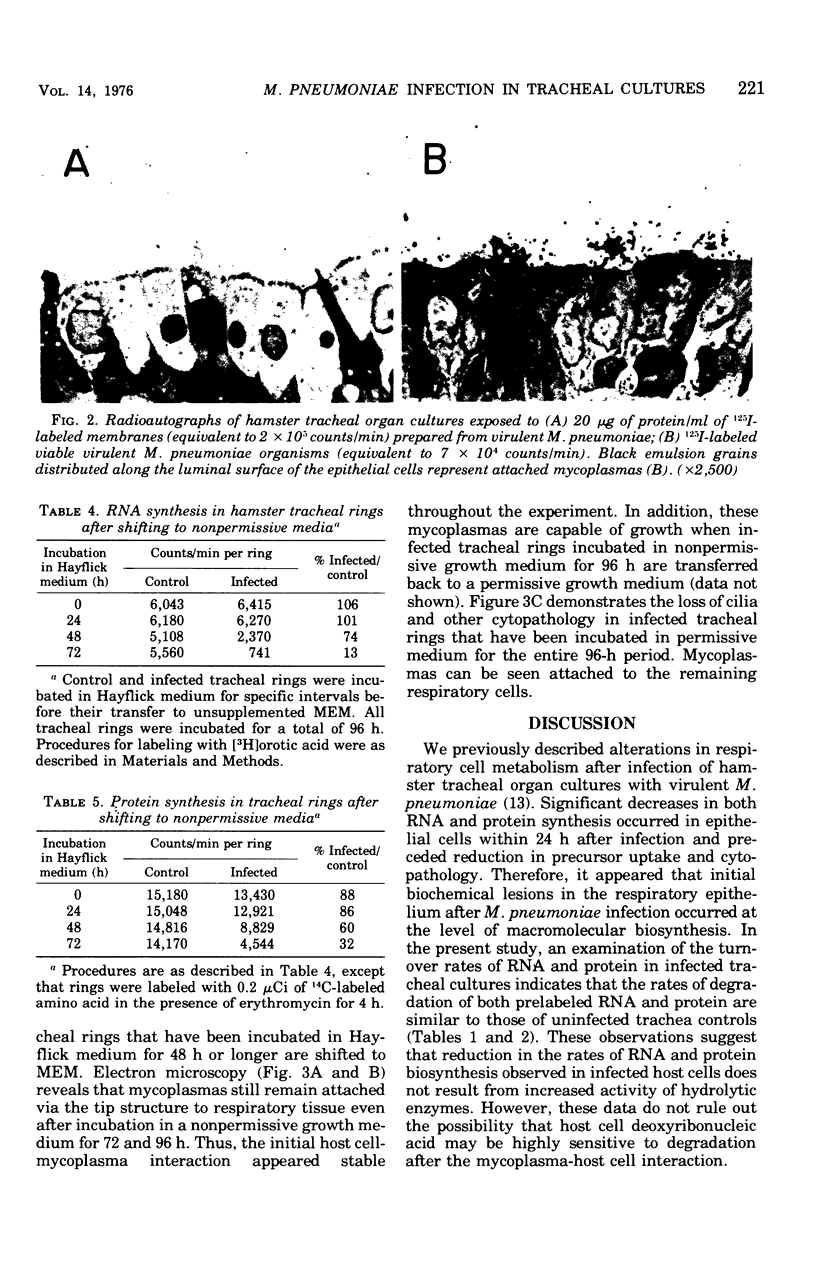
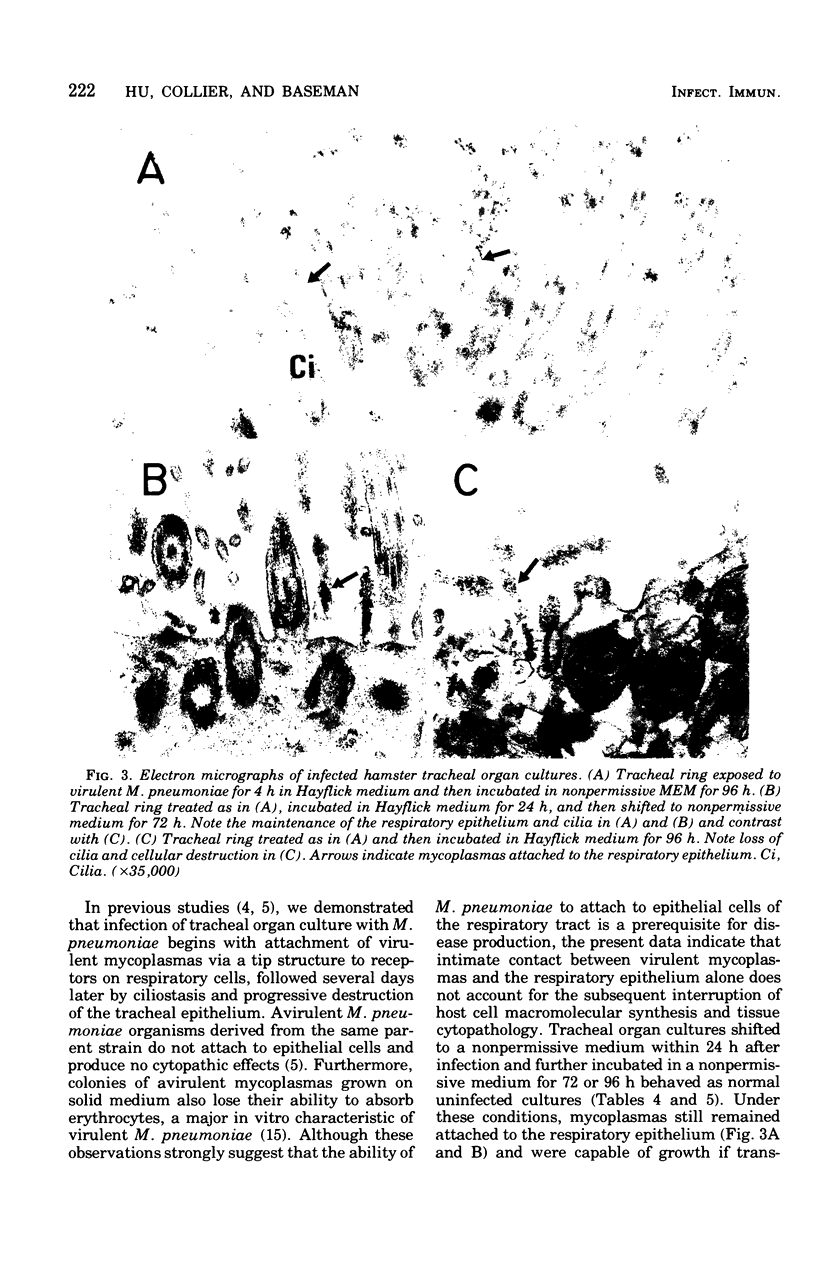
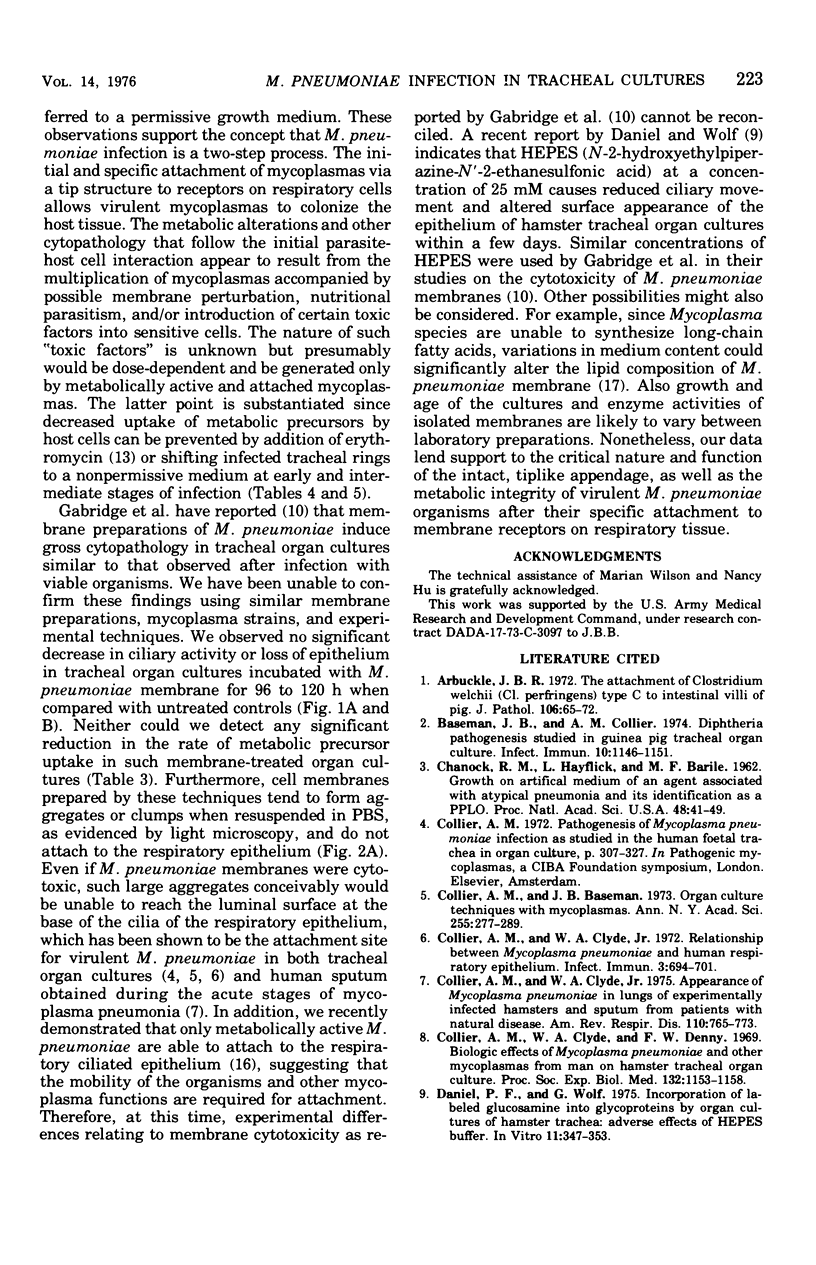
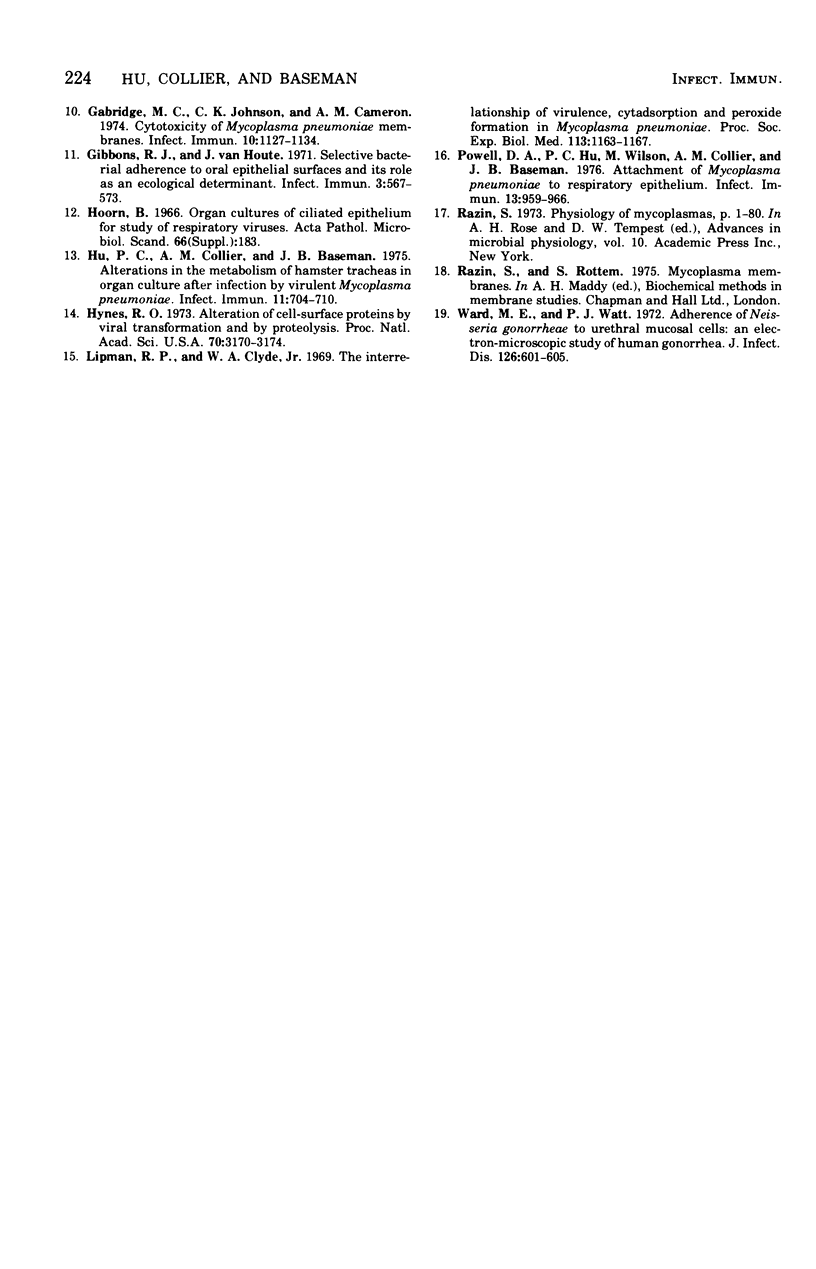
Images in this article
Selected References
These references are in PubMed. This may not be the complete list of references from this article.
- Arbuckle J. B. The attachment of Clostridium welchii (Cl. perfringens) type C to intestinal villi of pigs. J Pathol. 1972 Feb;106(2):65–72. doi: 10.1002/path.1711060202. [DOI] [PubMed] [Google Scholar]
- Baseman J. B., Collier A. M. Diphtheria pathogenesis in Guinea pig tracheal organ culture. Infect Immun. 1974 Nov;10(5):1146–1151. doi: 10.1128/iai.10.5.1146-1151.1974. [DOI] [PMC free article] [PubMed] [Google Scholar]
- CHANOCK R. M., HAYFLICK L., BARILE M. F. Growth on artificial medium of an agent associated with atypical pneumonia and its identification as a PPLO. Proc Natl Acad Sci U S A. 1962 Jan 15;48:41–49. doi: 10.1073/pnas.48.1.41. [DOI] [PMC free article] [PubMed] [Google Scholar]
- Collier A. M., Clyde W. A., Jr Appearance of Mycoplasma pneumoniae in lungs of experimentally infected hamsters and sputum from patients with natural disease. Am Rev Respir Dis. 1974 Dec;110(6):765–773. doi: 10.1164/arrd.1974.110.6P1.765. [DOI] [PubMed] [Google Scholar]
- Collier A. M., Clyde W. A., Jr, Denny F. W. Biologic effects of Mycoplasma pneumoniae and other mycoplasmas from man on hamster tracheal organ culture. Proc Soc Exp Biol Med. 1969 Dec;132(3):1153–1158. doi: 10.3181/00379727-132-34385. [DOI] [PubMed] [Google Scholar]
- Collier A. M., Clyde W. A. Relationships Between Mycoplasma pneumoniae and Human Respiratory Epithelium. Infect Immun. 1971 May;3(5):694–701. doi: 10.1128/iai.3.5.694-701.1971. [DOI] [PMC free article] [PubMed] [Google Scholar]
- Daniel P. F., Wolf G. Incorporation of labeled glucosamine into glycoproteins by organ cultures of hamster trachea: adverse effects of HEPES buffer. In Vitro. 1975 Nov-Dec;11(6):347–353. doi: 10.1007/BF02616370. [DOI] [PubMed] [Google Scholar]
- Gabridge M. G., Johnson C. K., Cameron A. M. Cytotoxicity of Mycoplasma pneumoniae Membranes. Infect Immun. 1974 Nov;10(5):1127–1134. doi: 10.1128/iai.10.5.1127-1134.1974. [DOI] [PMC free article] [PubMed] [Google Scholar]
- Gibbons R. J., van Houte J. Selective bacterial adherence to oral epithelial surfaces and its role as an ecological determinant. Infect Immun. 1971 Apr;3(4):567–573. doi: 10.1128/iai.3.4.567-573.1971. [DOI] [PMC free article] [PubMed] [Google Scholar]
- Hu P. C., Collier A. M., Baseman J. B. Alterations in the metabolism of hamster tracheas in organ culture after infection by virulent Mycoplasma pneumoniae. Infect Immun. 1975 Apr;11(4):704–710. doi: 10.1128/iai.11.4.704-710.1975. [DOI] [PMC free article] [PubMed] [Google Scholar]
- Hynes R. O. Alteration of cell-surface proteins by viral transformation and by proteolysis. Proc Natl Acad Sci U S A. 1973 Nov;70(11):3170–3174. doi: 10.1073/pnas.70.11.3170. [DOI] [PMC free article] [PubMed] [Google Scholar]
- Lipman R. P., Clyde W. A., Jr The interrelationship of virulence, cytadsorption, and peroxide formation in Mycoplasma pneumoniae. Proc Soc Exp Biol Med. 1969 Sep;131(4):1163–1167. doi: 10.3181/00379727-131-34061. [DOI] [PubMed] [Google Scholar]
- Powell D. A., Hu P. C., Wilson M., Collier A. M., Baseman J. B. Attachment of Mycoplasma pneumoniae to respiratory epithelium. Infect Immun. 1976 Mar;13(3):959–966. doi: 10.1128/iai.13.3.959-966.1976. [DOI] [PMC free article] [PubMed] [Google Scholar]
- Razin S. Physiology of mycoplasmas. Adv Microb Physiol. 1973;10:1–80. doi: 10.1016/s0065-2911(08)60086-7. [DOI] [PubMed] [Google Scholar]
- Ward M. E., Watt P. J. Adherence of Neisseria gonorrhoeae to urethral mucosal cells: an electron-microscopic study of human gonorrhea. J Infect Dis. 1972 Dec;126(6):601–605. doi: 10.1093/infdis/126.6.601. [DOI] [PubMed] [Google Scholar]





